Taking a Deeper Look into Murlocadin - An Aggressive Fishy Surprise of the Light
Murloc Paladin riffs on the tried-and-true Midrange Paladin archetype. Playing the deck, players aim to take control of the board with low-cost Murlocs, buff them to make efficient trades, and snowball this advantage to a mid-game victory.
Anyfin Used To Happen
Classic Paladin cards like Truesilver Champion and Tirion Fordring, one of the most efficient minions in the game, have cemented the class as a go-to for midrange decks in almost every meta. Murlocs found their way into that shell with the release of the insanely powerful card Anyfin Can Happen, which threatened up to 30 points of burst damage on turn 10.
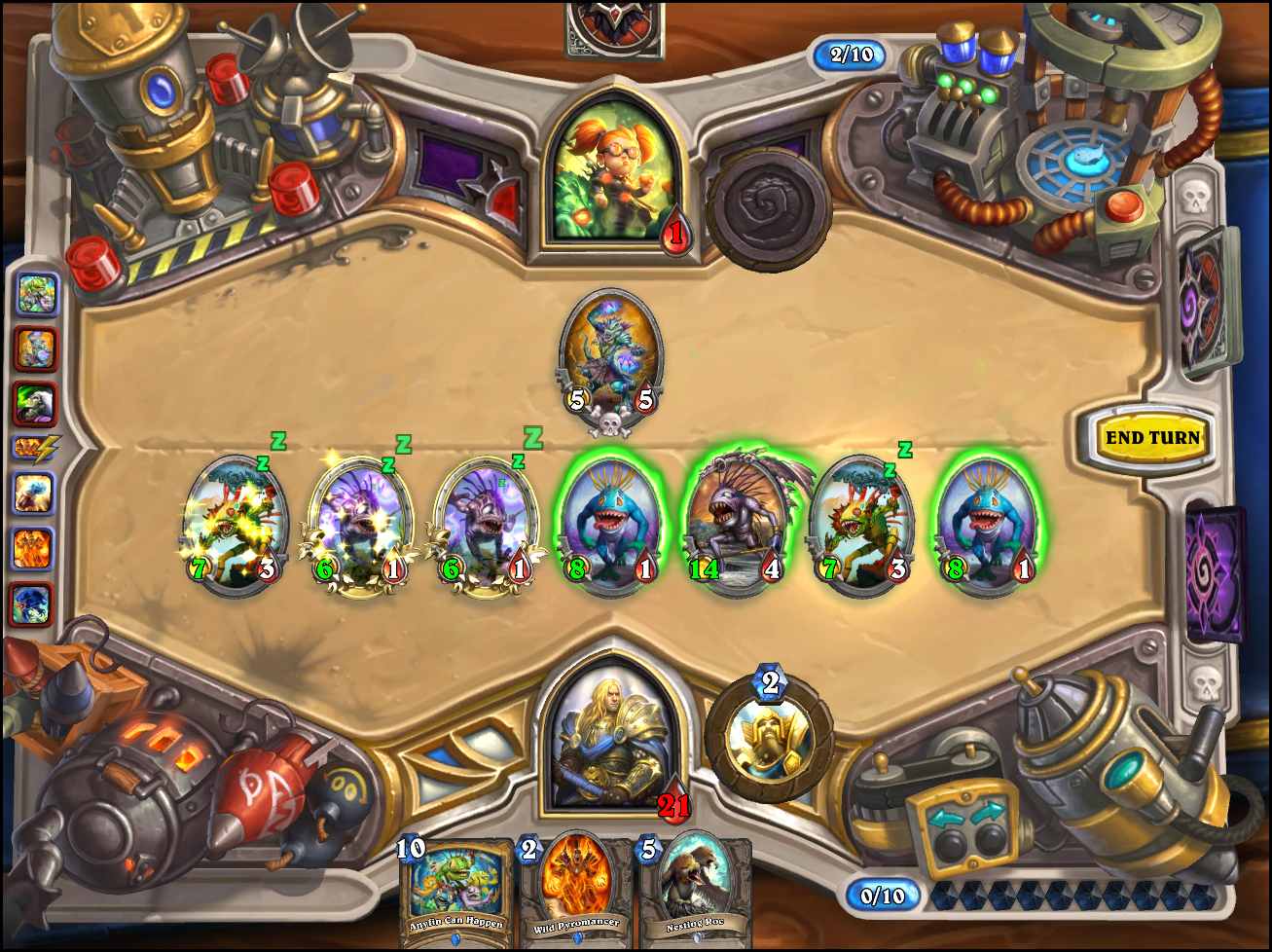
Anyfin Can Happen worked well within the midrange shell, but most players opted for control variants, using Doomsayer, numerous Equality clears, and Antique Healbot to stall games until unleashing lethal damage with the one card. After Anyfin Can Happen got pushed to the Wild format, Paladin players reacquainted themselves with Murlocs when Rockpool Hunter filled the gap between a turn one Vilefin Inquisitor and turn three Murloc Warleader. Further bolstered by Gentle Megasaur on turn four and the legendary Finja, the Flying Star, the Journey to Un’Goro expansion ushered in a veritable Murloc renaissance — one that happened to fit snugly in the cracks of the Midrange Paladin early game.
Pirates and Dragons and Murlocs, Oh My!
With the addition of Spikeridged Steed and Sunkeeper Tarim in the Journey to Un’Goro expansion, coupled with powerful early Murloc synergies, Paladins have powerful options to control the board early and throughout. The ability of Vilefin Inquisitor to generate Murlocs all game long makes Paladin the best class to capitalize on their synergies.
There are many variations to the Murloc Paladin archetype, some geared toward a hyper-aggressive start and some that favor a slower victory in the mid-game — but decks generally straddle the line between the two. Jambre piloted a unique list featuring Dread Corsair, Patches the Pirate, Cobalt Scalebane, and The Curator to rank 1 Legend in October. This is the list I have found most success with in the current meta, especially against Druid — the Murloc synergies threatening blowout wins if the opponent struggles to stall. If you feel too vulnerable to Golakka Crawler, you can pull the pirates for two Tar Creepers and a Bonemare for a more traditional Midrange build. And for something a little more spicy, [card]Zoobot/[card] manages to work considering our Beasts, Dragons, and many Murlocs.
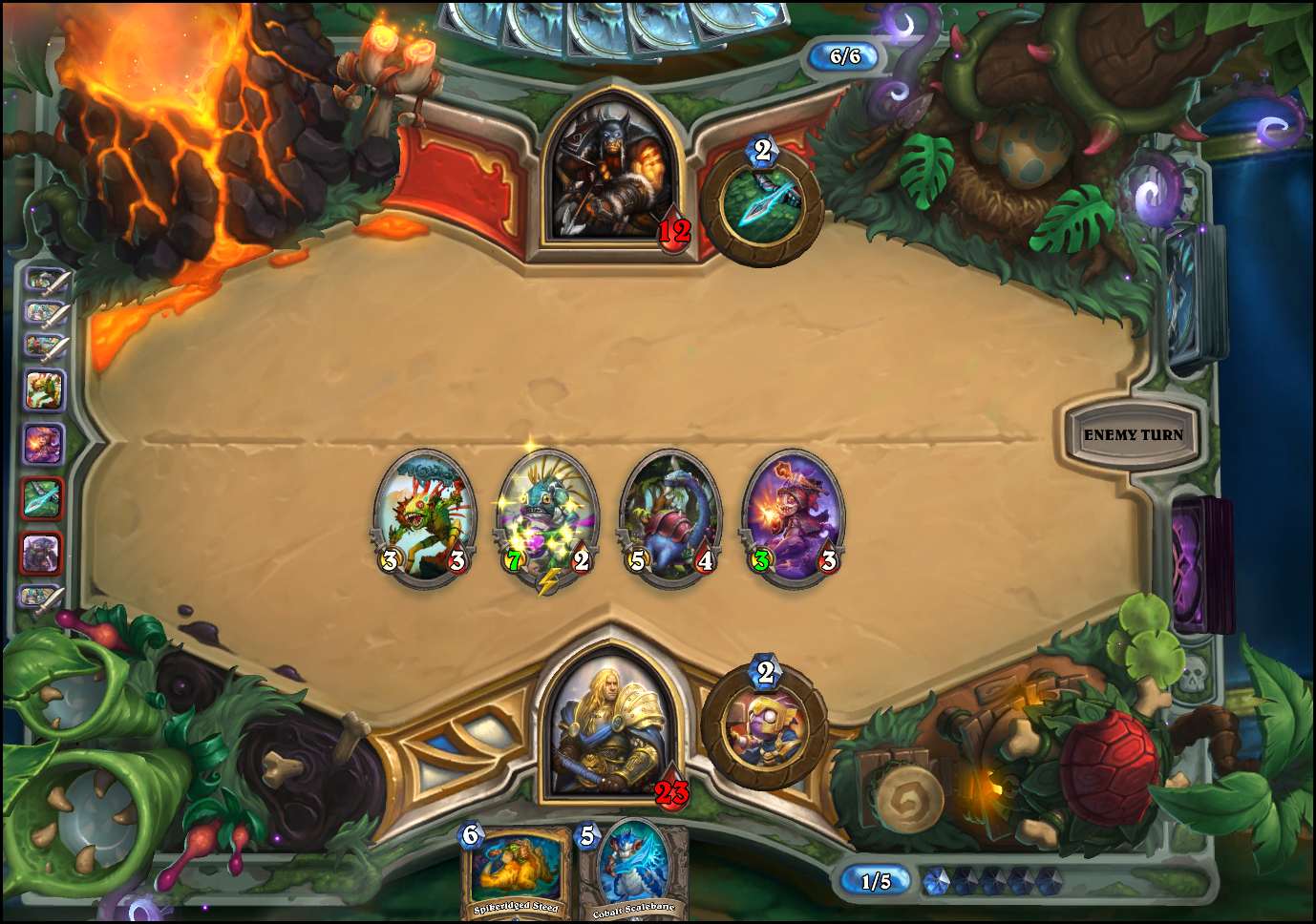
At first glance, Dread Corsair may seem an odd inclusion over Southsea Captain, considering the latter's omnipresence in Zoolock and Aggro Druid. But it plays a key role in the deck, and using the minion effectively (and efficiently!) can be the difference between sputtering out of gas or amassing the on-board damage for a turn-six win. To preserve early-game minions, most decks use Tar Creeper. Jambre’s list, however, includes four weapons that trigger a super cheap or even free Dread Corsair on turn three or four. This results in a massive tempo swing: it pulls Patches the Pirate from your deck, allows you to dispatch an opposing minion with a weapon charge, and protects your Murlocs from any stragglers. And of course the longer your Murlocs are on board, the better your chances of game-winning Gentle Megasaur buffs.
While not unprecedented, Cobalt Scalebane and The Curator are the most unique inclusions. The latter helps you mine for resources and thins your deck for subsequent draws. Meanwhile, Scalebane pulls a lot of weight: it makes your Curator draw better, buffs tokens to a threatening size every turn, and prevents your board from being obliterated by the more than 16% of all decks that play Dragonfire Potion. Without a near-perfect curve, Scalebane may in fact be the Murloc Paladin’s win condition against Razakus Priest.
Large taunt minions are another problem for our deck to deal with, which explains the two Blessing of Kings. These and Sunkeeper Tarim allow us to trade 1- or 2-cost minions into everything from a Primordial Drake to The Lich King. Value trades like that are how the deck manages to eek out wins against control decks without strong early curves.
Minion (22)
Ability (4)
Weapon (4)
Loading Collection
Follow the Warleader
Murloc Paladin is one of the best answers to the popular Razakus Priest and Big Druid decks. Against these two especially, mulliganing for your Murlocs on turn one and two is always correct. Playing a one-drop on curve to enable Rockpool Hunter’s buff effect is powerful, and maximizes the odds of snowballing damage over successive turns with Murloc Warleader and Gentle Megasaur. If you have at least a one or two drop, you can keep a Rallying Blade in all instances. As always, try to trade your minions efficiently over these first few turns, while minimizing the odds that an area-of-effect spell destroys your board. Once you draw a weapon, a taunt, or simply have made the read that your opponent does not have the cards to deal with your board, you can consider going face.
Making trades that minimize your opponent’s potential AoE value often will be the deciding factor in a win or an abrupt stall and loss--in this way, the style of play mirrors Zoolock. Avoiding a Priest’s Potion of Madness and Spirit Lash in the early turns will often lead to an overwhelming board presence by the time they can play Dragonfire Potion. Play around Volcanic Potion against Mage. In Control Warlock matchups, playing around Defile is near-impossible, but you can always play around a turn five Despicable Dreadlord. Murloc Warleader is your MVP in the early game; protect it and you’ll deliver about three times as much damage per turn as you would without it.
A Race Against Time...And Spreading Plague
Even though Hungry Crab meanders into decks when Murlocs really dominate, the sheer power of Murloc synergies, in tandem with Paladin’s strong set of midrange-geared cards, all but guarantees these creatures a presence until the first card set release of 2018. That’s when Blizzard banishes Vilefin Inquisitor, Grimscale Chum, Rallying Blade, and Finja, the Flying Star to the Wild format. Until then, as new cards morph the meta, Murloc Paladin will remain a persistent threat--and a formidable counter to the proliferation of Big decks, which struggle to stall against a Murloc Warleader and all its little soldiers.
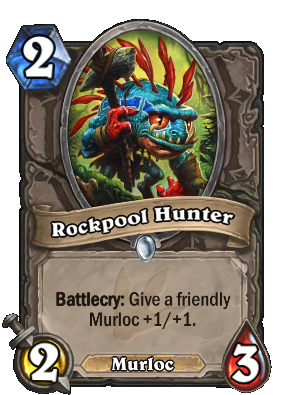
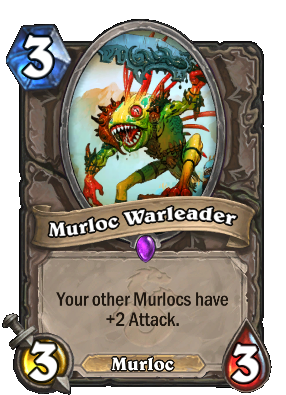
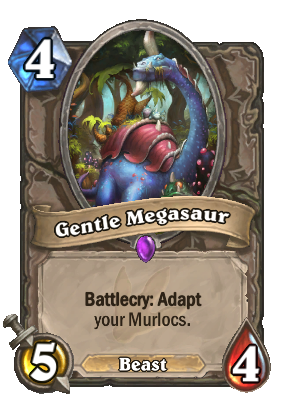


-
View User Profile
-
Send Message
Posted Dec 4, 2017 (Marin's Treasure)Is funny how murlocs decks started as a warlock decks and Blizzard ended pushing the paladin murloc decks. I-is kinda strange in both cases because someone don't really expect classes with dark or light themes to have humanoid fishes with them.
Well, at least they pushed way more shaman murloc, is more accurate for them to have them.
-
View User Profile
-
Send Message
Posted Dec 4, 2017 (Marin's Treasure)A trip down memory lane :)
-
View User Profile
-
Send Message
Posted Dec 4, 2017 (Marin's Treasure)Murlocs either snowball out of control (in particular the Murloc Tidecaller followed by Rockpool Hunter), or get absolutely rekt by tripping up on shit draws. Either way, murlocadin was always entertaining to play, but nothing is more satisfying in hearthstone than playing a mirror matchup back in the day when the buffs were distributed to all murlocs, not just your side, leading to chaotic fights that made your heart pound with each second.
-
View User Profile
-
Send Message
Posted Dec 4, 2017 (Marin's Treasure)Murlocs has always been my favorite archetype in the game, been trying this kind of decks out for a while. Really like it.
Good article!
-
View User Profile
-
Send Message
Posted Dec 4, 2017 (Marin's Treasure)Very nice article and an accurate analisys. Well done!
-
View User Profile
-
Send Message
Posted Dec 3, 2017 (Marin's Treasure)*eke
-
View User Profile
-
Send Message
Posted Dec 3, 2017 (Marin's Treasure)Odd number of spelling, typing, and format errors here for a HearthPwn article....
-
View User Profile
-
Send Message
Posted Dec 4, 2017 (Marin's Treasure)he was pissed up
-
View User Profile
-
Send Message
Posted Dec 4, 2017 (Marin's Treasure)-
View User Profile
-
Send Message
Posted Dec 3, 2017 (Marin's Treasure)Still kinda sad about the warleader nerf but still a favorite deck of mine
-
View User Profile
-
Send Message
Posted Dec 3, 2017 (Marin's Treasure)will this archetype survive in K&C? I'd love to play it, but just simply cannot drop 6+k on cards right now that might become completely nullified in a week or so... I love murloc's though and having a murloc deck has always been something I've wanted to play... well I hope they stay valid, with a few tweaks from the new set.. Murloc's and Kobold's :)
-
View User Profile
-
Send Message
Posted Dec 3, 2017 (Marin's Treasure)the roll call of players on aggro decks))
-
View User Profile
-
Send Message
Posted Dec 3, 2017 (Marin's Treasure)I still have no freaking clue how a Holy Paladin and Murloc's fit together flavor-wise... :P
-
View User Profile
-
Send Message
Posted Dec 3, 2017 (Marin's Treasure)Well, guess it's what it always is: Love?
-
View User Profile
-
Send Message
Posted Dec 4, 2017 (Marin's Treasure)If you look closer at the secrets they actually make sense (Noble Sacrifice is a Paladin sacrificing himself for someone else, Avenge is a minion wanting to avenge a slain ally and so on)
The Murloc's just make no sense at all in any way...
-
View User Profile
-
Send Message
Posted Dec 3, 2017 (Marin's Treasure)Good post, thank you for it.
-
View User Profile
-
Send Message
Posted Dec 3, 2017 (Marin's Treasure)just give paladin a murloc hero already that gives all murlocs +2 attack.
-
View User Profile
-
Send Message
Posted Dec 3, 2017 (Marin's Treasure)It was a great guide, with that I have to agree.
On the second point though, quite a lot of people have to resort to that tactic to get hype going around their decks. It's a sad reality but people want to 'test the waters' before they commit to writing or 'copy-pasting' content. I think it's down to most people (myself included although so far I've only complained once) that actually pre-write entire guides to their deck getting very little recognition and then somebody else coming along with a deck that is 99% similar to theirs with no text and getting 10x the amount of upvotes from the get-go.
-
View User Profile
-
Send Message
Posted Dec 3, 2017 (Marin's Treasure)The only good murloc card is a dusted one.
-
View User Profile
-
Send Message
Posted Dec 3, 2017 (Marin's Treasure)Do you think you could include a link to Jambre's list?